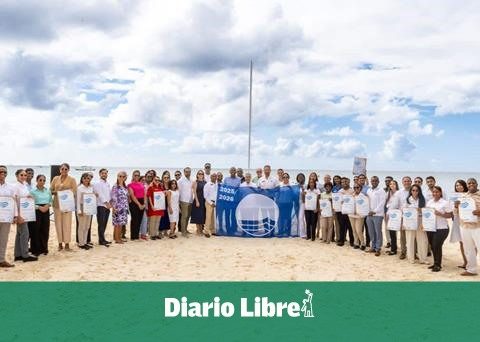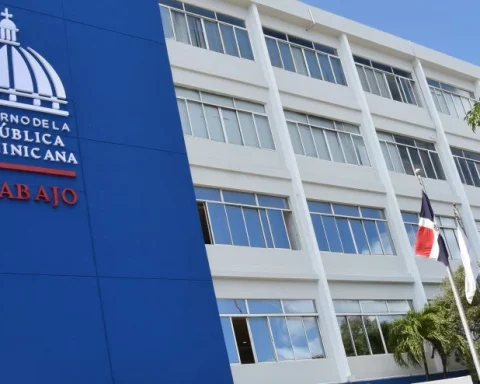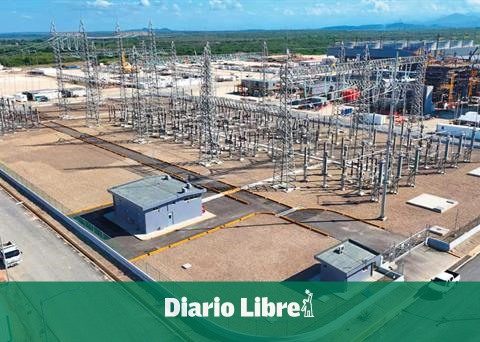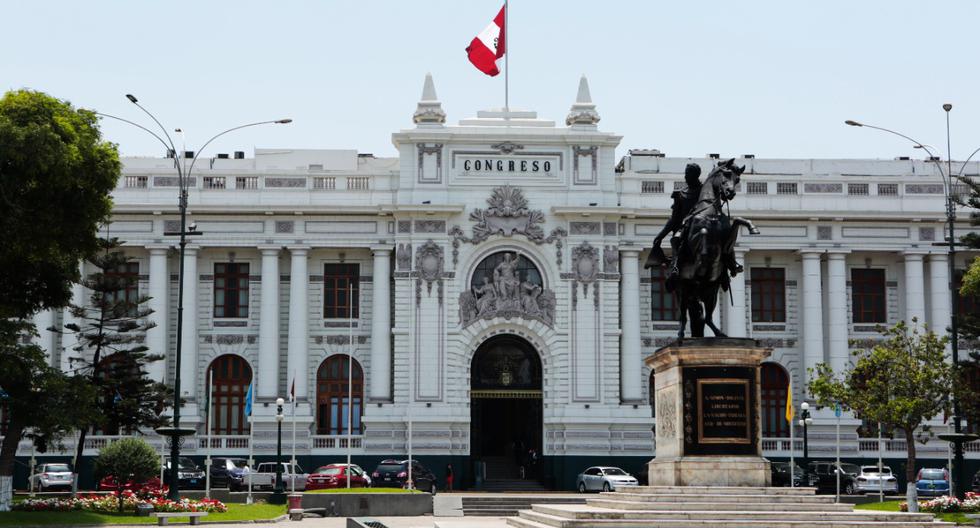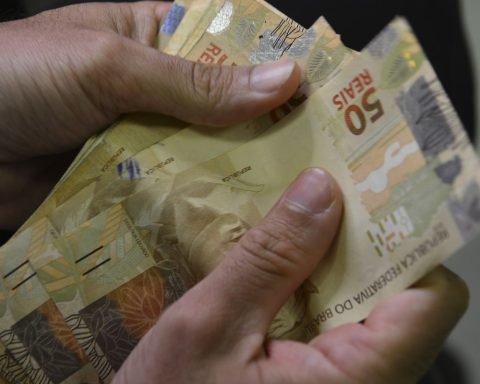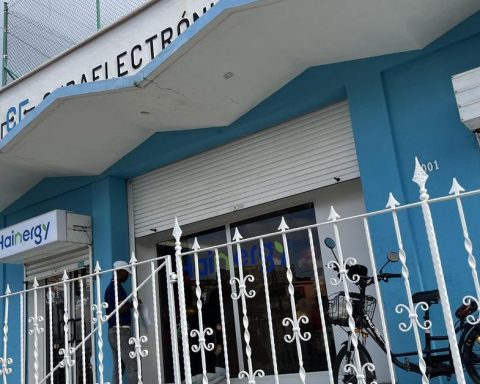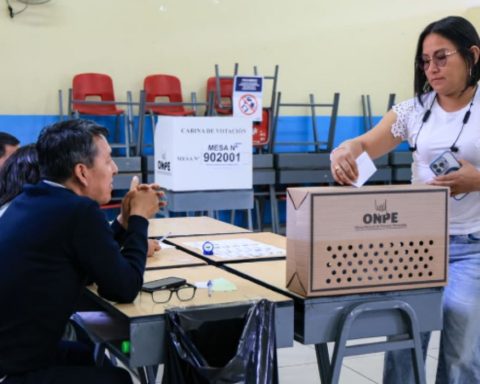Increasing labor formality, reversing the decline in poverty and inequality indicators, achieving greater financial sustainability in the electricity sector and increasing the real average spending of tourists are some of the challenges that the government led by Luis Abinader faces and cited by the Ministry of EconomyPlanning and Development in an evaluation of objectives set from 2021 to 2024.
In the “First annual monitoring report of the National Multiannual Plan for the Public Sector” The achievements reached by 2021 are analyzed, among which there are notable ones, such as the increase in the percentage of young people between 15 and 19 years old who finished the basic level, the increase in renewable energy with respect to the total generation and the progress in the recovery of trade policy, affected by the COVID-19 pandemic.
From the report, recently published by the Ministry of Economy, Free Journal extracts the achievements and challenges of sectors linked to the economic development of the country.
decent employment
Economy reports that female participation in economic activity has increased, which is reflected in the global rate of female participation, which increased from 47.6 to 51.2% from 2020 to 2021.
As of 2021, the jobs of MSMEs contributing to the Social Security Treasury (TSS) totaled 874,509, representing an increase of 16% compared to 2021.
In addition, the ministry indicates that the proportion of young people between 15 and 24 years old who do not study and are unemployed went from 28 to 23%, getting closer to pre-pandemic levels.
The biggest challenge in employment policy is to increase formality, since the percentage of people employed in the formal sector shows a variation of -2.7 percentage points compared to 2019.
Another challenge is the increase in the gap of the extended female/male unemployment rate, which went from 2.4 in 2020 to 2.7 in 2021, which indicates that more women are unemployed compared to men.
Opportunity creation
The indicators that refer to the percentage of young people between the ages of 15 and 24 who do not study or work, who belong to the poor and indigent population, and the salary rate of the poor and indigent population were among the indicators that showed the best performance, indicates the report.
As of 2021, the density of old-age, disability and survival insurance contributors was 97.1%, compared to 82.3% in 2020. This reflects a year-on-year increase of 14.8 percentage points.
Among the challenges that arise are: reversing the decline in poverty and inequality indicators, shoveling child labor, reducing infant mortality and the labor insertion of the most vulnerable (poor and indigent).
The child labor rate shows a setback, due to its growth of 28%, going from 1.94 in 2020 to 2.48 in 2021.
opportunities for youth
Some positive findings that are cited in the report are the increase in the percentage of young people between 15 and 19 years old who finished the basic level and the decrease in adolescent births in public centers.
As of 2021, 89.2% of young people between the ages of 15 and 19 completed the basic level, an increase of 3% compared to 2019. Likewise, adolescent births decreased by 12% compared to 2019, from 24.1% in 2019 to 21.2% as of 2021.
The main policy challenge is to reverse the effects of the COVID-19 pandemic on the youth open unemployment rate. As of 2021, 16.6% of young people between 15 and 24 years of age are unemployed, with a growth of 6% compared to 2019.
On the other hand, the report indicates the need to promote public policies that seek to reduce ninis. As of 2021, 23.3% of young people between 15 and 24 years of age did not study or work, which, despite its decrease compared to 2020, represents an increase of 29% compared to 2019.
Another challenge is to continue reducing the number of young people who die from traffic accidents, representing 24.9% of on-site deaths by 2021. Although it has decreased compared to 2019, it is still very high, it is observed in the report.
Likewise, reduce the number of young people between the ages of 15 and 35 who commit suicide. As of 2020, they represented 35% of all deaths from suicide, increasing by 6% compared to 2019.
Rural and agricultural population
The document also highlights that a relevant finding is the increase in the rate of formal employment in the agricultural sector, managing to increase to 11.8% in 2021, which represents a growth of 4%; as well as the salary rate in agriculture and livestock, which registered a year-on-year variation of 12.9%, growing from 19.6% in 2020 to 22.1% in 2021.
Among the greatest challenges are those related to the reduction of multidimensional poverty, such as the percentage of the population in a situation of monetary poverty in rural areas, indicators that increased by 5.7 and 3.3% during 2021, respectively. While the percentage of employed women in rural areas dedicated to unpaid work increased by 17.9%, reaching 4.7% in 2021.
Energy
The most significant observed energy achievement is the increase in renewable energy with respect to total energy generation. By 2021, the percentage of renewable energy in the energy matrix was 16.1%, registering a growth of 4.7% compared to 2020 and 26.9% compared to 2019.
Another relevant aspect cited is the decrease in the percentage of energy losses, which by 2021 stood at 28.8%, decreasing by 11.7% compared to 2020 and 13% compared to 2019.
The biggest challenge in energy policy is to achieve greater financial sustainability in the sector, which can be affected by the costs of raw materials and other external factors. Despite exceeding the values obtained in 2020, the Cash Recovery Index (CRI) did not exceed the values prior to COVID-19.
living place
The main progress mentioned in the report has been in terms of sanitation, the improvement of the indicators linked to homes with toilets connected to the sewerage system (increase of 1.6%) and homes connected to the sewerage system (growth of 7.4%).
In addition to continuing to improve the sanitation service, one of the main challenges is the lack of data to build timely indicators.
Tourism
The indicators that are closest to their goals are those of tourist arrivals, existing employment in the sector and the formal employment rate, says the report.
He adds that another indicator that shows good performance is the share of local hotel purchases with respect to total purchases, which gives indications of a better production chain.
None of the tourism policy indicators has managed to reach the levels presented in 2019, which demonstrates the strong impact that the pandemic had on the sector, the report notes.
The biggest challenge in tourism policy is increase the real average spending of tourists visiting the countrysince the high levels of inflation at the world level strongly reduce the performance of these indicators.
Another challenge is to increase the hotel occupancy rate, which presented levels well below normal during 2021.
Mining
Contributing jobs and mining exports showed a good recovery after a slight reduction experienced during 2020.
The biggest challenge facing the mining policy is to reduce its environmental impact measured by the level of water stress, which, despite being very close to its target levels for the coming years, has been increasing. and it is above the levels presented by the other countries of the region.
Trade
In 2021, the trade policy reported a progress of 64%, which represents considerable progress given the obstacles that COVID-19 represented for trade, such as the increase in the cost of raw materials and transportation.
Due to the increase in global demand for goods during the pandemic, several indicators managed to stand out and present positive figures, such as the productivity of the sector, exports and the formalization rate of employees in the commerce sector, which increased 21.0 and 3.8%. respectively in 2021.
One of the great challenges that trade policy faces is the diversification of exports, specifically focusing on those of products with a high technological content, whose growth rate fell from 7.6% in 2020 to 6.2% in 2021 .
industry sector
Among the indicators that are closest to their goals are the degree of delinquency in the industrial sector and labor productivity in the industrial sector.
The number of TSS contributing jobs in the manufacturing sector also performed well, with only 3,560 contributing jobs missing to reach its 2022 goal, the report says.
Among the indicators that have had the greatest difficulty in reaching their pre-pandemic levels, he mentions the number of graduates of technical-professional training in the industrial sector of the National Institute of Technical-Professional Training (Infotep), which totaled 50,057 graduates by 2021 compared to 81,693 graduates in the 2020.
On the other hand, the formal employment rate in the industrial sector fell slightly, closing 2021 at 69.5%, compared to 71.6% for 2020.
Promotion of MSMEs
The indicator that focuses on the amount disbursed by Pomipyme experienced a great recovery, increasing from 3,307 million for 2020 to 7,794 million for 2021, says the report. Similarly, it adds that the number of MSMEs that are certified by the Ministry of Industry, Commerce and MSMEs as State suppliers show significant growth, with a view to reaching their goal in the near future.
It underlines that the little information available to 2021 makes it difficult to compare most of the policy indicators with the pre-pandemic levels, however, the indicators that resilience policies against COVID-19 suffered the most are the number of MSMEs with RNC and the number of employees of these, reducing by 9.8 and 10.7%, respectively.
The amount of exports from formal MSMEs was also affected, falling by 12.3% from 2019 to 2020.
Territorial public policies
The territory policy shows a progress of 59%. In 2021, 31 provincial development councils were created and 45.6% of local governments have formed their municipal development councils, the document states.
The biggest challenge in territorial policy is to increase the percentage of the national budget allocated to the municipalities. In 2020, 2.02% of the national budget was allocated to local governments, being the lowest percentage that has been transferred in the last five years.
Public debt, expenses and income
For 2021, the policy registered a progress of 54%, this as a result of the discretionary measures of fiscal support to face the effects of the pandemic. The Ministry of Economy indicates that the ratio between the growth of tax revenues and expenses turned out to be -58.9%, this is due to the 33% growth in tax revenues compared to 2021 and the decrease in spending by 0.6%.
The report highlights that the biggest challenge for public finance policy is to slow down inflation levels, a situation that is affecting the world in general as a result of the COVID-19 crisis and the conflict between Russia and Ukraine, triggering, mainly, interruptions in the supply chain and the high prices of petroleum products.
The inflation rate in the country went from 5.5% in 2020 to 8.3% in 2021, the highest in the last six years.


